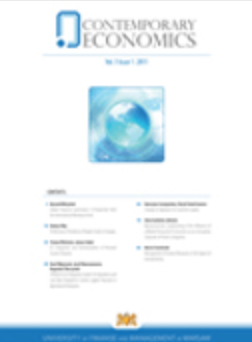How Taxes, Education and Public Capital Influence Economic Growth in Poland
How Taxes, Education and Public Capital Influence Economic Growth in Poland
Author(s): Michał KonopczyńskiSubject(s): Education, National Economy, Labor relations, Economic development, Transformation Period (1990 - 2010), Present Times (2010 - today), Fiscal Politics / Budgeting
Published by: VIZJA University
Keywords: optimal fiscal policy; income taxes; labor taxes; capital taxes; economic growth; human capital; public capital;
Summary/Abstract: This paper investigates the relationship between economic growth in Poland and selected elements of fiscal policy and private spending on education. We use the Mankiw-Romer-Weil model, augmented with learning-by-doing and spillover-effects and with concepts from the literature on optimal fiscal policy. We demonstrate that, from 2000-2015, economic growth in Poland was primarily driven by rapid improvements in the level of human capital (at 4.4% per annum) coupled with a rapid increase in public capital (6.0%) and secondarily due to the accumulation of private capital (2.1% annually). Simulations of tax cuts suggest that a synchronized reduction of all tax rates by 5 percentage points (pp) in Poland should increase the annual GDP growth rate by approximately 0.32 pp. Increasing (private or public) spending on education by 1 pp of the GDP would increase the growth rate by approximately 0.3 pp. We also analyze the effects of increasing public capital. The stock of public capital in Poland is still below the optimal level, and it may be beneficial to increase investment in public capital at the cost of public consumption (which is intuitively clear) and – to some extent – at the cost of public spending on education.
Journal: Contemporary Economics
- Issue Year: 12/2018
- Issue No: 3
- Page Range: 337-360
- Page Count: 24
- Language: English

